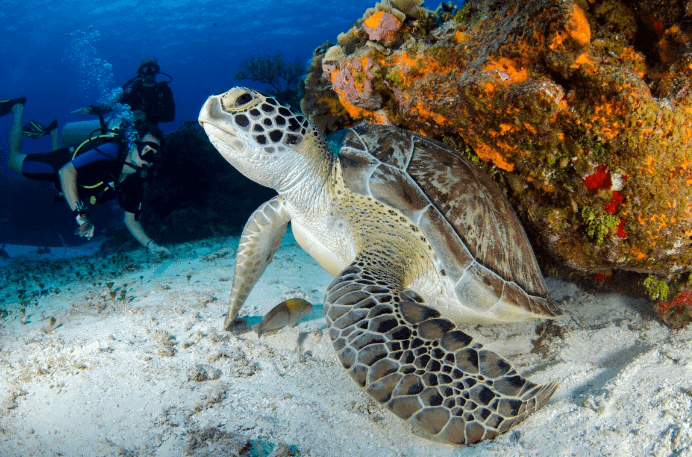
Best Scuba Dive Locations in Europe.
Under the glistening seas of Europe’s coastal paradises awaits a world of astounding beauty and mesmerising marine life. For scuba divers, Europe has a rich and intriguing underwater terrain that rivals some of the world’s most known dive locations. From brilliant coral reefs to eerie shipwrecks, the continent offers an astounding array of underwater delights to divers of all skill levels. We’ll take you on a voyage through some of Europe’s top scuba diving spots, where every dive promises a memorable adventure into the heart of the deep blue. So pack your bags and prepare to discover the secret gems that lie under Europe’s beautiful waters.
What Are The Best Scuba Dive Locations in Europe?
1- Silfra Fissure scuba diving Iceland
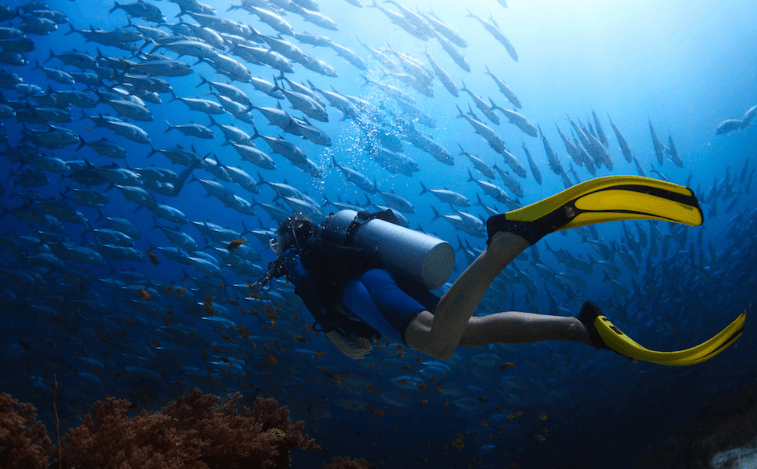
Imagine plunging into the core of a geological wonder where you can actually touch two continents at the same time. Silfra Fissure, located within Iceland’s Thingvellir National Park, provides divers with an unforgettable experience as they transit the tectonic plate boundary between the North American and Eurasian plates. This one-of-a-kind dive location is famous for its incredible clarity, unearthly rock formations, and the impression of floating between two worlds.
The Dive Adventure:
Silfra’s water is supplied from neighbouring glaciers and flows for decades through subsurface lava fields before surfacing crystal clear and exceedingly clean. As you slip into your drysuit and plunge into the freezing 2-4°C (36-39°F) waters, you’ll notice that the purity of the water is unlike anything you’ve ever seen.The visibility, which frequently exceeds 100 metres (328 feet), allows you to view every detail of the underwater scenery.
Dive into Silfra’s four main sections, which are termed Silfra Hall, Silfra Cathedral, Silfra Lagoon, and Silfra Deep, and you’ll come across beautiful underwater scenery. The high rock walls of Silfra Cathedral, in particular, are ornamented with rich colours of green, brown, and blue when sunlight enters the water. The dive provides a sensation of weightlessness as you float over submerged stones and fissures with only the soft bubbling of your exhaled air as the only sound.
Rewards and Challenges:
Due to the cold water temperatures, diving at Silfra needs a drysuit certification. While the suits keep you dry and warm, it’s critical to regulate buoyancy and equalisation effectively. Diving here takes meticulous planning, but the effort is handsomely rewarded with an unprecedented sense of adventure and connection with Earth’s geological forces.
My conclusion,
Silfra Fissure is more than simply a dive; it’s a voyage through the past and a glimpse into the future. The chance to float between continents is a really humbling and awe-inspiring experience that will leave divers with enduring memories. Silfra provides a journey that will permanently transform your view on our planet’s geology, whether you’re an expert diver or fresh to the underwater realm.
2- Blue Hole Scuba Diving, Malta

One of the Best Scuba Dive Locations in Europe is The Blue Hole, located on Malta’s gorgeous island of Gozo, with a compelling natural wonder that draws scuba divers and explorers alike. This underwater attraction mixes magnificent rock formations, crystal-clear waters, and a touch of mystery to create a memorable experience.
The Allure of the Blue Hole:
As you approach the Blue Hole, you’ll be greeted by a stunning panorama of turquoise waters set against craggy limestone cliffs. However, the main fascination lies under the surface. The Blue Hole is a vertical chimney that drops to a depth of around 14 metres (46 feet), ushering divers into an underwater realm that feels like a secret refuge.
The Dive Divers descend via the Blue Hole’s small chimney into an underwater cave lighted by sunshine rays reaching through the surface. Colourful marine life and beautiful rock formations embellish this dreamy underwater grotto. After exiting the cave, you’ll arrive to the Azure Window, an awe-inspiring natural arch that formerly graced numerous travel brochures and was featured in “Game of Thrones.”
Encounters at Sea:
The underwater environment of the Blue Hole is filled with marine life, ranging from tiny nudibranchs to schools of damselfish rushing through the jagged crevices. If you’re lucky, you could see an octopus or a moray eel peeping out from its hiding place. Because of the clean waters, this dive location is ideal for underwater photographers who want to capture the brilliant colours and distinctive structures.
My final thoughts.
Dive into the Blue Hole for an adventure that combines discovery, beauty, and a link to Malta’s geological heritage. This lovely diving location allows visitors to enjoy the enchantment of the Mediterranean’s underwater environment while learning about the mysteries hidden behind its azure depths.
3- Zenobia Wreck Scuba Dive, Cyprus

The Zenobia wreck sits sunken beneath the crystal-clear waters of Larnaca Bay in Cyprus, capturing the fascination of divers from all over the world. This gigantic ship, which was lost in a sad accident in 1980, has been turned into an underwater playground for explorers, history buffs, and marine life lovers.
A Glimpse into the Past:
The Zenobia was initially intended to serve as a cross-channel ferry, transporting passengers and vehicles between Sweden and Cyprus. However, during her inaugural trip, a technical problem caused her to drown barely a km off the coast of Larnaca. Since then, the Zenobia has become one of the world’s most famous and accessible wreck diving destinations.
The Dive Adventure:
Dive into the depths around the Zenobia and you’ll come face to face with a hauntingly stunning sight: the massive ruin laying on its side in seas varying from 16 to 42 metres (52 to 138 feet) deep. The wreck is nearly 170 metres (557 feet) long, giving it an ideal location for exploration. You’ll come across trucks still filled with goods, rows of toilet bowls, and vestiges of what was once a bustling vessel as you wander its halls and compartments.
Marine Ecosystem and Life:
The Zenobia wreck has become a refuge for aquatic life as well as a playground for divers. The region is frequented by schools of barracuda, snappers, groupers, and jacks. Moray eels may emerge from fissures, and if you’re lucky, you could see a turtle gliding through the water. The restoration of the wreck into an artificial reef has resulted in a rich ecology that adds to the attraction of this diving destination.
Rewards and Challenges:
While diving on the Zenobia is an incredible experience, discovering wrecks requires respect and care. Due of the depth, hazardous currents, and limited places, this advanced-level dive necessitates sufficient training and expertise. The reward, though, is a once-in-a-lifetime opportunity to stand among the ruins of a ship that once sailed the oceans and reflect on the circumstances that led to her demise. This location is one of the Best Scuba Dive Locations in Europe.
My final thoughts.
Diving the Zenobia is a time-traveling adventure that allows you to connect with the past and experience the eerie beauty of a shipwreck preserved in time. The Zenobia wreck is a tribute to the power of the water, from its cargo-filled cabins to the teeming aquatic life that now calls it home.
4- Medes Islands Scuba Diving, Spain
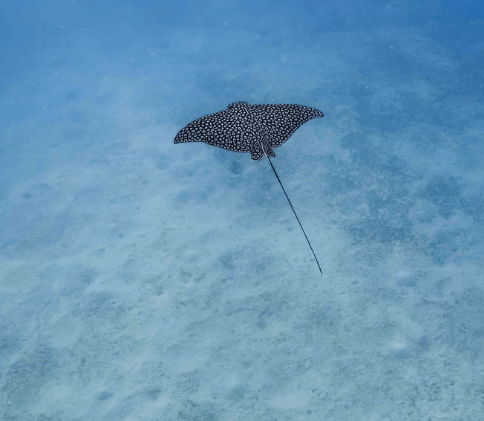
The Medes Islands archipelago, nestled in Spain’s magnificent Costa Brava coastline, is a tribute to the remarkable power of conservation. What was once a haven for pirates is now a thriving marine sanctuary, allowing divers to explore some of Europe’s most biodiverse and intriguing underwater environments.
Marine Reserve and Biodiversity Hub:
The Medes Islands were designated a marine reserve in 1983 and are known for their incredible marine life. Because of the protected status, marine life has flourished, making this region a hotspot for divers looking for encounters with a diverse range of species, from colourful fish to magnificent pelagic giants.
Dive Adventures:
Diving at the Medes Islands provides divers of all skill levels with a variety of experiences. The shallow waters around the islands are ideal for beginners, allowing them to see vivid fish schools, gorgeous seahorses, and delicate nudibranchs. As you go deeper, you’ll come across walls covered with vibrant corals, rocky outcrops filled with marine life, and underwater caverns beckoning the daring.
Marine Life:
The Medes Islands aquatic Reserve is home to a diverse range of aquatic life. Among the reefs and rocky structures, divers can observe groupers, bream, damselfish, and barracuda. The reserve is well-known for its seasonal visitors, which include beautiful moon jellyfish and even sunfish during the summer months.
My Final thoughts:
Diving the Medes Islands is a voyage into the heart of a marine sanctuary, where the underwater environment is alive and vibrant. The islands provide an underwater Eden that captivates the senses and leaves divers with a strong appreciation for the natural beauty that flourishes under the waters, from fascinating fish to beautiful coral formations.
5- Scapa Flow Scuba Dive, Scotland
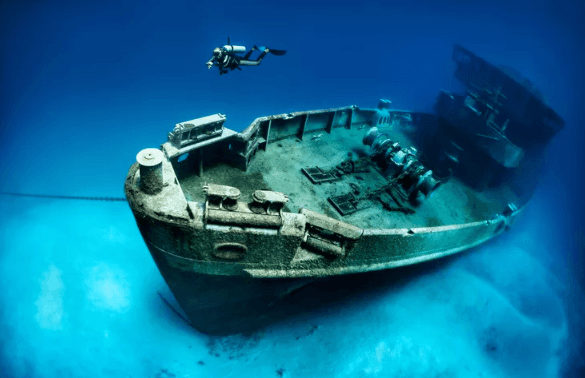
A subterranean world of history and mystery lurks under the tranquil waters of Scapa Flow in Scotland. This natural harbour has witnessed the magnificence of naval fleets as well as the catastrophic events of two World Wars, leaving behind a collection of shipwrecks that have become a thrilling playground for divers wishing to connect with the past.
Historical Importance:
The history of Scapa Flow is linked with naval warfare and maritime events. During both World Wars, it functioned as a base for the British Royal Navy. The harbour saw the historic “Scuttling of the German Fleet” in 1919, when the German High Seas Fleet was deliberately sunk by its own men. The relics of these events are now submerged under the waters.
The Shipwrecks:
Scapa Flow is home to various wrecks that draw divers. Among them are the ruins of the German High Seas Fleet, including the battleships SMS Bayern and SMS Markgraf. These massive ruins, in various levels of deterioration, provide a chilling peek into their previous splendour. Because of the shallow waters and typically quiet circumstances, many of these wrecks are accessible to divers of all skill levels.
Dive Adventures:
Scapa Flow diving combines adventure, history, and undersea discovery. Each dive delivers a sense of reverence for the past and the stories stored within the corroded hulls, from swimming among the skeleton remnants of ships to discovering marine life that has made these wrecks its home.
Marine Ecosystems and Life:
While the wrecks themselves are the major draw, the waters of Scapa Flow are also alive with marine life. Divers may come across a variety of species, including curious seals and schools of fish that have formed themselves around the wrecks. The surrounding waters are also home to thriving kelp forests and rocky reefs.
Challenges and Planning:
Due to the severe circumstances, diving in Scapa Flow necessitates meticulous planning. Cold water, dangerous currents, and occasionally poor visibility necessitate expert diving abilities. To provide a safe and pleasurable experience, proper training and equipment, including drysuits, are required.
MY Final thougths
Scapa Flow is an underwater museum that displays stories of naval might, military decisions, and the passage of time. Dive these wrecks to immerse yourself in history, touch artefacts from the past, and honour the memory of people who affected the course of events. It’s an expedition that will make divers appreciate the sea’s power to preserve and disclose echoes of bygone times.
6- Capo Carbonara, Sardinia
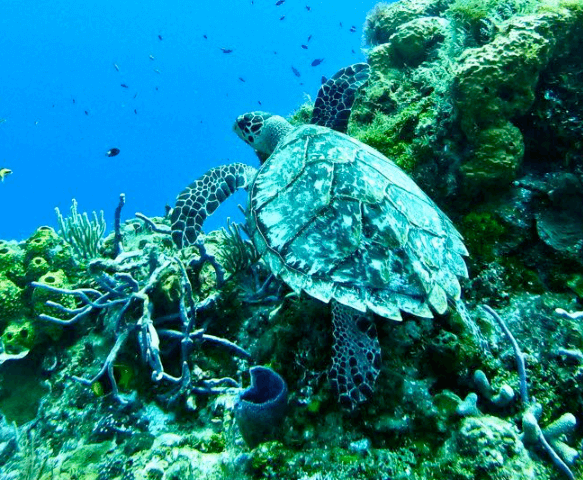
The sun-kissed coastline of Sardinia is famous for its beauty, but under the glistening surface lies a hidden world as enthralling—the underwater sceneries of Capo Carbonara. This underwater paradise off the island’s southern point entices divers to explore its pure waters, vivid coral gardens, and encounters with a variety of marine species.
Diverse Underwater Life:
Capo Carbonara is a microcosm of the marine life of the Mediterranean. Divers have a sensory overload when they encounter a wide range of marine environments, from seagrass meadows to stony reefs and underwater caverns. This variety supports a plethora of marine life, both little and huge, making it a haven for underwater photographers and nature aficionados.
Beautiful Coral Gardens:
Capo Carbonara’s underwater environment is covered with colourful coral formations that serve as both refuge and food for a variety of marine animals. Gorgonians, sponges, and corals combine to form a rainbow of colours that dance in the mild currents, making every dive a visual treat.
Encounters at Sea:
Diving in Capo Carbonara allows you to see a diverse array of marine species. Every dive brings fresh surprises, from swarms of sparkling fish like damselfish and bream to the secretive seahorses tucked in the seagrass. Divers who are lucky enough may come across elegant rays, fascinating octopuses, or the rare gentle giant: the loggerhead sea turtle.
Passages and caves:
Exploring underwater caverns and pathways enhances the Capo Carbonara experience. As divers explore through complex rock formations covered with marine life, diving into these secret regions gives a feeling of adventure. These dark and enigmatic places provide a striking contrast to the brilliant coral gardens.
Final Thoughts:
Capo Carbonara offers divers to enter a world of tranquillity and beauty, where time appears to slow down amidst the magnificent underwater sceneries. It’s a reminder that Sardinia’s fascination extends beyond its magnificent beaches and landscapes, with an equally captivating world just under the sea’s surface waiting to be discovered making it one of Best Scuba Dive spots in Europe.
7- Plakias Caves Scuba Dives, Greece
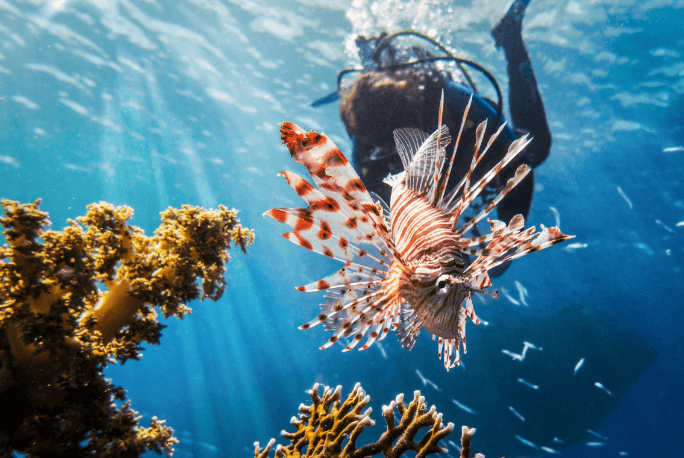
The Plakias Caves are located on the southwestern shore of Crete, Greece, and appear to be ripped from old mythology. Divers may enter a fantastical maze of aquatic caverns and tunnels, where the play of light, shadow, and ancient rock formations creates an experience unlike any other.
The Abyss’s entrance:
You enter a secret realm of mystery and discovery as you descend into the Plakias Caves. The entrances to these caves are frequently marked by stunning underwater archways that take you into a network of corridors sculpted over millennia by the sea’s unrelenting embrace.
Cathedrals submerged:
Divers are surrounded by amazement as they pass through cathedral-like chambers studded with stalactites and stalagmites inside the Plakias Caves. The ethereal dance of shadows created by sunlight pouring through the apertures above adds to the enchantment. These natural structures, shaped by time and water, give each cave a distinct personality.
Marine Encounters:
While the caverns themselves are fascinating, the surrounding waterways are as so. Shoals of fish thread their way through the water columns, and curious octopuses may extend tentacles from cracks. Exploring the caverns allows visitors to see fragile organisms that have evolved to the unusual circumstances of these underwater havens.
Exciting Exploration:
Dive the Plakias Caves with an adventurous mindset and a willingness to travel into limited regions. Divers must travel through channels of varied widths and heights, therefore proper training and expertise are required. While the caverns are a thrilling challenge, they also give explorers with a sense of accomplishment and awe.
A Mythical and Realistic Journey:
Diving in the Plakias Caves is like stepping into a story from Greek mythology. The enchanting atmosphere, the majesty of the formations, and the idea of being a part of something bigger than oneself all contribute to the experience of being immersed in a realm beyond time.
My thoughts
The Plakias Caves provide a one-of-a-kind trip that connects human curiosity with Earth’s natural beauties and is one of the Best Scuba Dive spots in Europe. Every dive is an adventure of the unknown, an opportunity to interact with the ancient forces that sculpted these mysterious underwater passages, from the embrace of the entry to the secret chambers within.
8- Port-Cros National Park, France
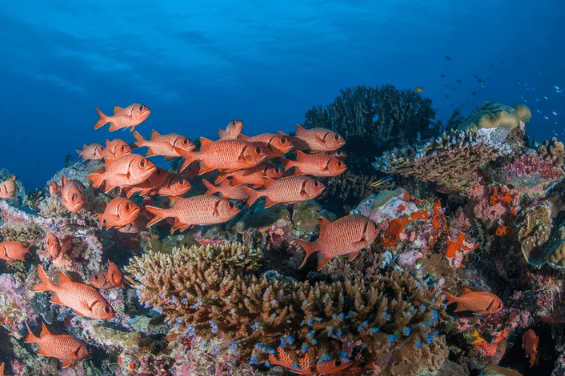
The Port-Cros National Park is a marine refuge of breathtaking beauty in the turquoise seas of the Mediterranean, just off the French Riviera. Divers may discover underwater meadows, rocky reefs, and a kaleidoscope of marine life in this protected underwater refuge, which is rich in biodiversity and lively marine ecosystems.
Marine Reserve Glamour:
Port-Cros, which was designated a national park in 1963, is a sanctuary for marine species due to its protected status. Divers from all over the globe are drawn to the area because of its various underwater environments and stringent conservation measures.
Gardens Underwater:
Dive in Port-Cros National Park and you’ll feel like you’ve entered an underwater paradise. Seagrass meadows sway softly in the currents, sheltering and feeding a variety of aquatic species. Colourful sponges and corals dot the rocky formations, providing a spectacular backdrop for interactions with the fish species that live in these waters.
Marine Life:
Port-Cros’ seas are home to a diverse array of marine life. Divers may come to schools of damselfish, sea bream, and colourful wrasses when diving. Octopuses and cuttlefish frequently appear, displaying their extraordinary camouflage abilities. The gorgeous bottlenose dolphins that frequent these waters may be spotted by lucky divers.
Dive Site Variety:
Port-Cros National Park has a range of diving locations to suit all skill levels and interests. Divers may select their journey, from shallow seagrass flats for novices to more challenging stony reefs and underwater cliffs. Some dive locations even have underwater caverns and tunnels for those looking for a more thrilling experience.
A Coastal Paradise:
Diving at Port-Cros National Park reminds you of the marvels lying under the sun-kissed surface of the French Riviera. It’s an opportunity to immerse yourself in a world of bright colours, tranquil seascapes, and the beautiful dance of aquatic life.
Final Thoughts:
Port-Cros National Park invites divers to experience the rhythm of the water and its fragile creatures on a trip into the heart of a Mediterranean paradise. Each dive is an opportunity to connect with the cycles of nature and the everlasting beauty of the undersea world, from seagrass meadows to the mysteries of stony reefs.
9- Azores scuba dive, Portugal
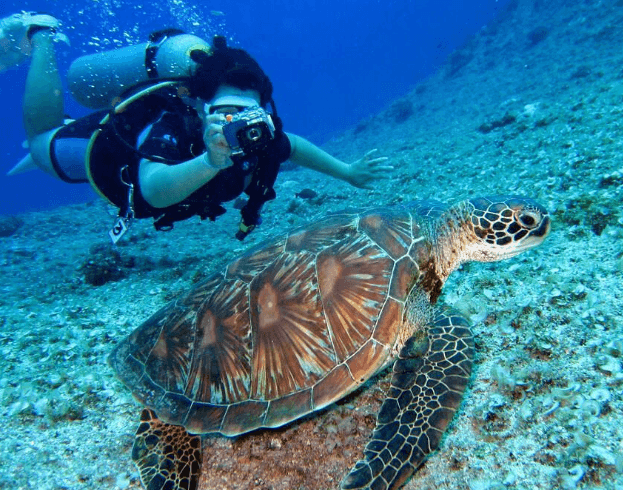
The Azores are a group of volcanic islands in the centre of the enormous Atlantic Ocean that constitute a Portuguese paradise that stretches beneath the seas. The Azores provide a once-in-a-lifetime chance for scuba divers to explore a variety of underwater landscapes, from brilliant reefs to intriguing volcanic formations, and to encounter marine species that are as diverse as they are compelling.
Volcanic splendour:
The volcanic origins of the Azores have shaped an undersea habitat unlike any other. Submerged craters, seamounts, and lava deposits produce a stunning and awe-inspiring underwater terrain. Dive here is like descending into the depths of a buried volcano, where each dive reveals a world sculpted by ancient geological forces.
Marine Biodiversity:
Because of the Azores’ remoteness in the midst of the Atlantic, distinctive marine habitats have evolved. Divers may expect to see anything from colourful fish like triggerfish and parrotfish to bigger dwellers like manta rays and perhaps the rare whale shark. The Azores are also a shelter for pelagic species, making it possible to see dolphins, turtles, and even blue sharks.
Diverse Dive Locations:
The Azores provide a variety of diving locations to suit varied interests and ability levels, from the crystal-clear waters surrounding Santa Maria Island to the deep blue depths near Pico. Every dive shows a different aspect of the archipelago’s underwater ecosystem, whether you’re exploring underwater tunnels, plunging down vertical cliffs, or immersing yourself in coral gardens.
The Blue Immersion:
The turquoise waters of the Azores give amazing visibility, frequently surpassing 30 metres (100 feet), allowing divers to fully enjoy their surroundings. The interaction of light and water highlights the bright colours of coral, marine life, and underwater landscapes.
Final Thoughts:
The Azores encourage divers to become explorers, to go under the surface and uncover the mysteries of a world fashioned by both the ferocity and the elegance of nature. Each dive is a chapter in a tale that unfolds under the waves—a story of volcanic creation, teeming marine life, and the eternal beauty of an archipelago that draws visitors from all over the world.
10- Eddystone Reef Scuba Diving, England
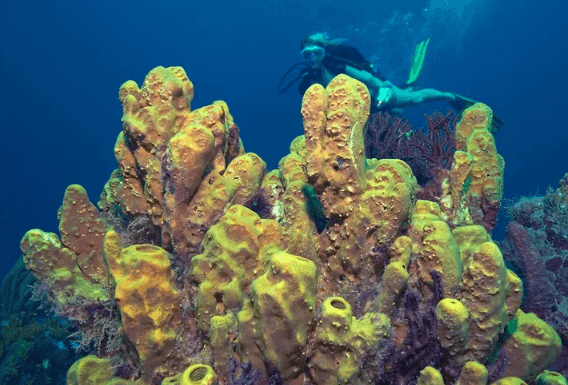
The Eddystone Reef is a hidden treasure off the rough coast of England, where the waves pound on the Devon coastline. This underwater realm, highlighted by majestic pinnacles and rich marine life, allows divers to explore a secret and enthralling world.
Majestic Pinnacles:
The spectacular underwater pinnacles that soar from the depths like buried skyscrapers are what make Eddystone Reef famous. These rocky outcrops form an underwater metropolis with nooks, crannies, and tunnels that divers like to explore. The play of light on these patterns produces a hypnotic ballet of shadows and colours.
Diverse Underwater Life:
Eddystone Reef’s marine life is as diverse as the underwater scenery itself. Schools of fish dart through the rocky crevices, including pollack, wrasse, and mackerel. Inquisitive seals may make a visit, and lucky divers may see a basking shark or perhaps a dolphin.
Vibrant Ecosystems:
The abundant marine life and thriving ecosystems surrounding Eddystone Reef are proof of the sea’s capacity to maintain life even in seemingly severe conditions. Each nook and hole gives a view into the interwoven web of life that flourishes in the currents, from encrusting corals to the delicate anemones that cover the rocks.
Rewards and Challenges:
Diving at Eddystone Reef has its unique set of difficulties. The open ocean environment may bring with it a variety of variables, including fluctuating currents and visibility that varies with the tides. However, the benefits for those who delve under the waters are many, as each dive offers the chance to discover secret nooks and encounter marine species in its native home.
A Peek Below the Surface:
Eddystone Reef diving is an immersion into a world of contrasts. Each dive exposes a new aspect of this underwater refuge, from the quiet top to the teeming life beneath. It’s a reminder that the water, even close to England’s borders, harbours secrets waiting to be revealed.
Final Thoughts:
Eddystone Reef welcomes divers to immerse themselves in a world where the ballet of light and water takes the stage. The pinnacles, marine life, and the sense of being in a timeless setting all contribute to the feeling of being immersed in nature’s theatre. It’s a tour that allows divers to see the hidden wonders that lie under the familiar oceans. Remains one of the Best Scuba Dive Locations in Europe.
11- Cape Kamenjak scuba diving, Croatia
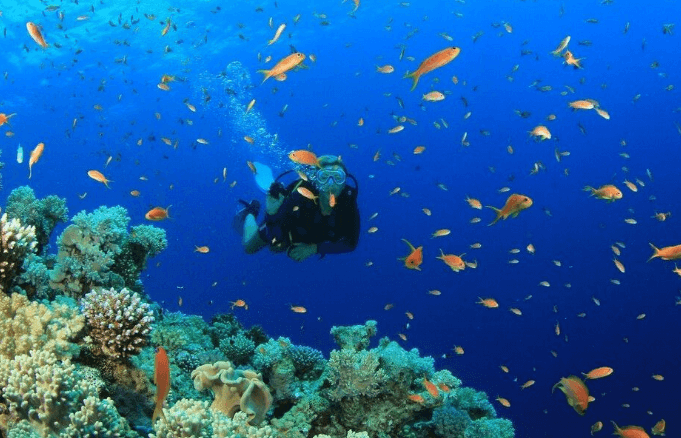
The enchanting Cape Kamenjak is a hidden jewel for scuba divers along Croatia’s magnificent Istrian Peninsula, where the Adriatic Sea licks the craggy shoreline. This stunning diving location allows visitors to explore an underwater world filled with limestone caverns, interesting passageways, and a variety of marine life that thrives in the crystal-clear waters.
Limestone Wonderland:
Cape Kamenjak is famous for its distinctive underwater scenery, which has been sculpted by the erosion of limestone cliffs over thousands of years. As a result, there is a network of caves, tunnels, and passageways through which divers may traverse, revealing the mysteries buried beneath the surface.
Underwater Tunnels and Caves:
Dive at Cape Kamenjak and you’ll be transported to a world of mystery and discovery. Small, intimate passageways to bigger caverns filled with colourful marine life may be found among the underwater caves and tunnels. The interplay of light and shadow in these underground tunnels produces an ethereal atmosphere that captures the imagination.
Marine Life Diversity:
Divers may expect to see a variety of marine animals beneath the waters of Cape Kamenjak. Colourful fish dart through the rocky formations, and curious octopuses may emerge from their hiding places. The complex tunnels house a variety of species, while the surrounding waters teem with the brilliant colours of underwater life.
Adventurers’ Journey:
Dive at Cape Kamenjak requires a sense of daring and curiosity. Because traversing underwater caverns needs specialised abilities, proper training and expertise are essential. While the dive may be difficult, the payoff is a one-of-a-kind experience in which divers may explore a world that few have seen.
Final thoughts
Scuba diving at Cape Kamenjak invites you to discover a world just under the surface—a world of secret tunnels, spectacular formations, and the enthralling dance of light in the depths. It’s an opportunity to venture beyond the mundane and into a world of wonder and discovery.
12- Portofino Marine Park, Italy
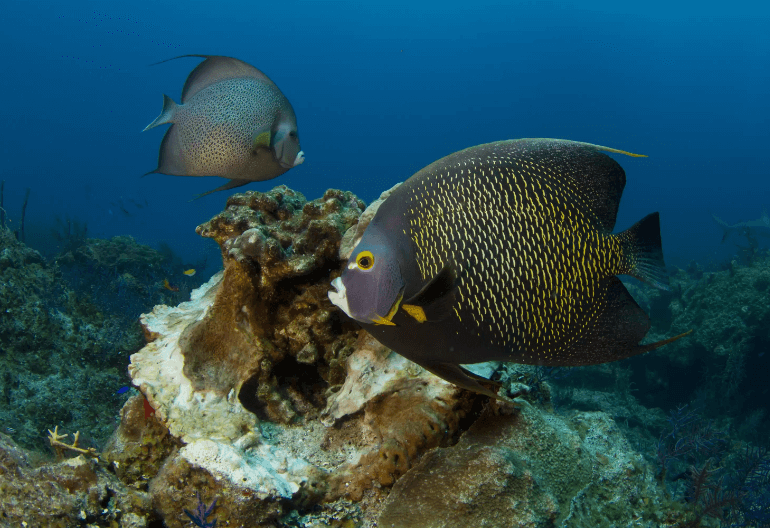
The Portofino Marine Park, located along the scenic Italian Riviera, is a refuge of underwater beauty that lures scuba divers to explore its brilliant coral gardens, unique rock formations, and the rich marine life that lives inside its protected waters.
Oasis Underwater:
Portofino aquatic Park is a haven for aquatic life as well as people who want to discover its hidden gems. The park’s waters are abundant in biodiversity, making it an ideal spot for divers to explore the Mediterranean’s underwater delights.
Encounters at Sea:
The Portofino Marine Park’s waters are filled with marine life. Divers may see a variety of Mediterranean species, including beautiful seahorses, secretive cuttlefish, and intriguing octopuses. Damselfish and wrasse shoals contribute to the dynamic environment under the waves.
Divers may visit a variety of dive sites.
Portofino Marine Park has a range of diving spots for divers of all ability levels. Each dive location has its own distinct appeal and displays a different aspect of the park’s splendour, ranging from shallow coves ideal for novices to deeper rocky formations for the more experienced.
Nature’s Symphony:
Dive at Portofino Marine Park and you’ll be treated to a concert of nature’s tunes. The colour harmony, the elegance of marine life, and the peacefulness of the underwater environment provide the impression of being part of a beautiful symphony.
Final Thoughts:
Divers are invited to become a part of an underwater masterpiece—a canvas created by nature’s brushstrokes—at Portofino Marine Park. Each dive takes you on a voyage into a realm of wonder, where the tranquillity of the water and the vibrancy of marine life combine in a visual and sensual celebration of the Mediterranean’s aquatic treasures.
13- Gulen Dive Resort, Norway
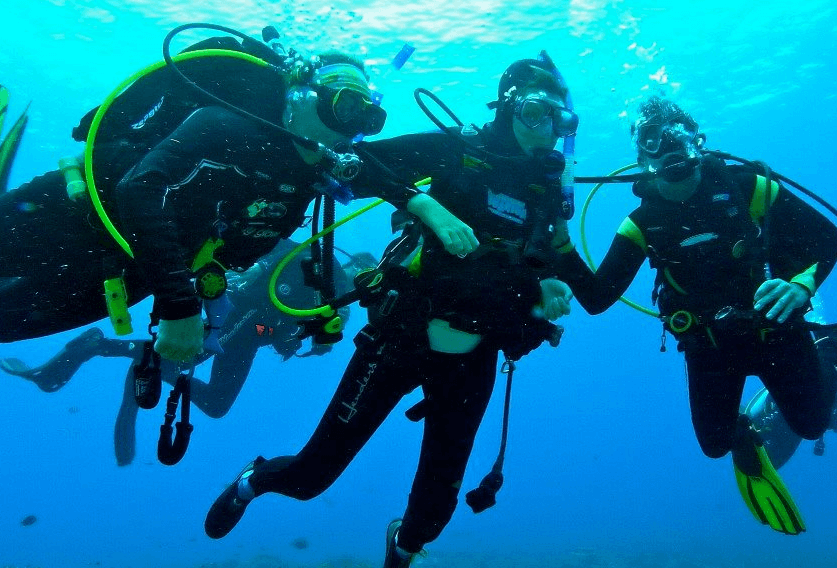
The Gulen Dive Resort, nestled amid Norway’s stunning fjords, invites travellers to dive into its frigid yet mesmerising seas. This one-of-a-kind diving location allows visitors to discover underwater wrecks, vivid marine life, and the secrets of the deep against the breathtaking background of Norway’s fjord sceneries.
Wonders of Cold Water:
Gulen Dive Resort is well-known for its cold water diving adventures. While the water temperature may be cold, the rewards are enormous. The frigid waters of the fjords have preserved wrecks and marine life, resulting in an environment rich in history and beauty.
Historical Shipwrecks::
Diving at Gulen Dive Resort is like taking a step back in time, as you will come across well-preserved shipwrecks. The fjords are a shipwreck graveyard, with everything from WWII wrecks to more recent victims. Each wreck has a tale to tell, and diving here provides an insight into Norway’s history and naval past.
Marine Life Diversity:
Gulen Dive Resort is rich with marine life despite the frigid waters. The undersea world is a microcosm of biodiversity, with everything from colourful anemones to nudibranchs and crabs. Divers may also come across bigger species such as wolf fish and cod in the fjords.
Water that is crystal clear:
The purity of the fjords is exceptional, providing for excellent vision even in the frigid waters. This clarity improves the experience as you examine the underwater landscapes, wrecks, and marine life in more detail.
A One-of-a-Kind Adventure:
Gulen Dive Resort diving is an adventure for those looking for an amazing experience. Cold water diving necessitates suitable thermal protection and equipment, as well as a feeling of adventure in exploring a new underwater habitat.
Fjord Mysticism:
Gulen Dive Resort provides divers with an opportunity to see the majesty of Norway’s fjords from a unique perspective—the underwater world. The combination of the towering cliffs above and the tranquillity below creates a mood that is both intimate and magnificent.
Final Thoughts:
Gulen Dive Resort diving allows you to connect with history, environment, and the wild splendour of Norway’s fjords. Each dive is an adventure as you explore the depths, learning about shipwrecks and marvelling at the tenacious marine life that persists in these frigid waters.
FAQs About Scuba Diving in Europe
Is scuba diving popular in Europe?
Scuba diving is quite popular throughout Europe. The continent’s underwater ecosystems range from coral reefs to ancient shipwrecks, making it a popular destination for divers of all skill levels.
What are some of Europe’s most popular scuba diving destinations?
The Mediterranean Sea (Spain, Italy, Greece, and so on), the Red Sea (Egypt), the English Channel (UK and France), the Azores (Portugal), and the Adriatic Sea (Croatia) are all popular scuba diving sites in Europe.
Is there any kind of qualification needed to go scuba diving in Europe?
Most European nations require divers to be certified by a recognised organisation such as PADI, NAUI, CMAS, or SSI. Specific restrictions should be checked with local legislation and diving centres.
When is the best time of year in Europe to go scuba diving?
The greatest time to go scuba diving in Europe varies depending on where you go. Summer months (May to September) generally offer warmer seas and improved visibility. Due to their gentler conditions, certain places, such as the Mediterranean, may be dived all year.
What marine life might I expect to observe while diving in Europe?
Colourful fish, octopuses, cuttlefish, rays, dolphins, turtles, and occasionally bigger species like sharks can be found in European seas. The variety of marine life varies depending on the location and the diving site.
Are there any unique underwater attractions in Europe?
Absolutely! Many unique underwater sites may be found in Europe, including historic shipwrecks (Scapa Flow in Scotland), underwater caverns (Cape Kamenjak in Croatia), and artificial reefs (El Hierro in Spain). Divers may enjoy a variety of experiences at these attractions.
Is it necessary for me to carry my own diving equipment to dive in Europe?
While some divers prefer to carry their own equipment for convenience and familiarity, most dive centres in Europe provide rental equipment. It is suggested that you verify with the diving centre ahead of time to ensure availability and, if required, book in advance.
How much does scuba diving typically cost in Europe?
The cost of scuba diving in Europe varies greatly based on location, dive site, equipment rental, and whether you take guided dives or certification classes. A single dive should cost between €40 and €100, as an approximate estimate.
Is there anything to consider when diving in Europe?
Yes, proper diving practises are critical to protecting Europe’s fragile marine ecosystems. Follow buoyancy control principles, prevent interaction with marine life, and respect the undersea environment. Restriction or protected zones may also exist in some regions.
Related
- 20 Best States For Outdoor Adventures in 2024.
- Exploring the Thrill of Caribou Hunting in Ontario’s Wilderness.






